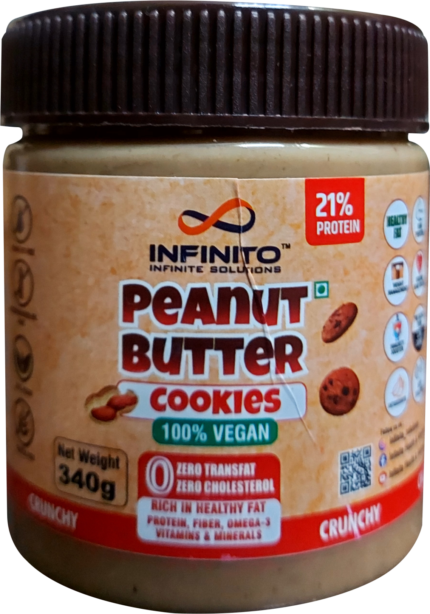| Honey Types |
Option 1, Option 2, Option 3, Option 4 |
|---|---|
| Subscription |
Orders above 1000/- for 3 months 7%, 6 months- 10% >1500, 3months 12% for > 2000, 6 months 15% and for > 2000, 3 months 17%, 6 months 20% |


Subscription
₹100.00 – ₹10,000.00
Only logged in customers who have purchased this product may leave a review.
FREQUENTLY ASKED QUESTIONS
We source it from our partner beekeepers who have implemented beehive technology and who
follow our quality guidelines. Our Beekeeper is Approved by Maharashtra Khadi and Village
Industries board which itself is certification enough on its purity
Most of the time the farms from where the bees suck the nectar, are organic as the beekeeper
travels the length and breath of the country to aid the farmers in cross pollination for their
organic farmers. However, we have not certified the products organic but ensure that the honey
and allied products are 100% free from any chemical pesticide contamination and additives
The product is free from any added sugars. The sugars and carbohydrates mentioned in the
nutrition facts of the label is are the naturally occurring sugars in the honey
Honey constitutes to 75 – 80% sugars. Approximately half is glucose and balance fructose
depending on the source of nectar. Balance 20-25% is water with traces of protein, fats and fiber
Raw and Pure honey itself is a natural preservative. Honey being acidic in nature, the high
concentration of sugar forces the water out of any bacterial or yeast cells that could contaminate
any food
Yes our Honey is raw. It only extracted and undergoes straining to remove any particles of dirt or
bee parts post which it is directly bottled without any further processing or heating
Our Honey is produced by the bees from the nectar of the flowers. The beekeepers as well as the
farmers use ethical methods. There are no additives. During extraction we ensure that the bees
are not disturbed or harmed, thus ensuring healthy bees that produce quality honey.
Almost all the variants of honey crystallize over a period of time. Carom, Acacia and Holy Basil
take longer time while Mustard and Sesame honey crystallizes faster. The process of
crystallization starts as soon as they leave the 35°C hive. Infact at times they crystallize inside
the hive itself if the temperature drops to 10°C
One of the main factors of the speed of crystallization is the glucose and fructose ratio in the
nectar. The enzymes present inside the bee breakdown the sucrose into glucose and fructose.
75-80% of the honey content is made up of glucose and fructose and 20-25% is water. Glucose
and Fructose both contribute to the sweetness honey tastes sweet, but the ratio of glucose
influences crystallization.
Since the content of water is less, honey is considered to be a supersaturated with the combined
various sugars. Over a period of time, the glucose molecules crystallize or separate out of the
solution that the bees have created, thus forming crystals
The first crystals act as a seed, creating more crystals and filling the whole container. Tiny
molecules of pollen, propolis, and wax can also serve as a building point for crystals. To remove
the crystals, one needs to immerse in warm water or heat for a few minutes
Honey has low pH(acidic) and is hygroscopic in nature. The acidic nature does not allow
survival of any bacteria and therefore pure and raw honey can stay fresh for even 2000 years if it
is sealed and stored away from humidity
The Indian and international food laws (like FSSAI, USFDA, etc) make it mandatory to mention
a best before date or expiry date on the label of all packed foods. Therefore, out of compulsion to
adhere to the government norms the Best before date is printed on our honey bottles.
Raw Honey can crystallize or change colour over a period of time which is a natural process.
There is no additive and infusions in our honey. The nectar is derived from the plant which is
growing in a vast organic field that are grown almost 2-5 miles of area and thus contributes to
ensuring monofloral honey(an average bee travels 1-2 miles to gather nectar). Each monofloral
honey variant gives the additional benefit of the plant properties from which the nectar is derived
Bees are one of the most intelligent creatures on earth with complex ways of working.To avoid mixing of nectar sources,the beehives are placed in field have a vast source of the given
plant thus ensuring that the bee does not look elsewhere
Raw Honey is the most premium amongst the various types of Honey(Kindly refer to our
comparison sheet between regular vs Organic vs Raw) . There are no additives and extracted
without any human intervention ensuring that not a single bee is harmed. Thus our systems
ensure traceability and 100% purity. The beekeepers limit where and when the bees can feed.
Therefore, mono-floral honey involves extra work and thus expensive than regular honey.
Single-origin honey is subject to seasonal variations and is available in limited quantities. The
farmers also are paid twice the market rate to ensure the best practices
Apart from the same, large honey producers can bottle much more honey by heating it first.
Small and local beekeepers will typically market their honey as raw and unfiltered, since they are
more concerned with preserving the nutrients in their honey than large producers. Therefore, the
pricing is a result of classic supply-side economics
Honey flavour depends on the flower species from which the bees gather the nectar; acacia is
typically sweet and light while forest honeys are often richer. Expensive honeys tend to taste
stronger and more distinctive
e.g. Jamun honey t is a nutritious food containing nutrients like Iron, Vitamin A, Vitamin C,
Potassium, Zinc, Folic acid and more. Therefore, it has medicinal benefits in treating digestive
problems, respiratory infections, and anaemia. Thus the honey derived becomes even more
valuable when the bees make the raw honey using the nectar from these flowers
Raw honey has amazing health benefits, however, we do not recommend raw honey for
infants younger than 1 year old due to a bacteria called Clostridium botulinum that can
cause infant botulism(rare form of food poisoning) and is sometimes found in honey, both
raw and pasteurized. Once a child is 1 year old, their digestive system has matured enough
to kill the bacteria
Most of the honey you find on the shelves of your local grocery store are typically
pasteurized (heated at very high temperatures) or have undergone ultra-filtration to
kill/remove everything inside the honey. This allows it to stay liquid forever but removes all
the beneficial nutrients in honey. Many store-bought honeys are a blend of honeys from
different regions. Infinito Raw Honey is taken right out of the hive, minimally strained to remove hive debris, and then packaged. It is pure, unblended, unheated, unprocessed honey.
Like other raw honeys, it will solidify over time
You can store it at room temperature. Make sure that the lids are tightly sealed, as honey likes to absorb odours and moisture. Also be sure to avoid leaving it in overly hot locations.
About 50ml of honey/ day is optimal and you should not consume more than that. However, if you suffer from any health ailments, do consult with your doctor before making honey a part of
your diet
Honey is rich in antioxidants, meaning it may reduce your risk of some cancers or heart disease.
Honey also has antibacterial properties and can soothe a cough or effectively treat wounds.
Overall, the healthiest type of honey is raw, unprocessed honey, as there are no additives or
preservatives
In addition to its use as a natural sweetener, honey is used as an anti-inflammatory,
antioxidant and antibacterial agent. People commonly use honey orally to treat coughs and
topically to treat burns and promote wound healing.
*Water Test: In a glass of water, put a spoon of honey, if your honey is dissolving in water then
it's fake. Pure honey has a thick texture that will settle at the bottom of a cup or a glass
*The Thumb test: Apply a small amount of honey on your thumb, check if it is spilling like any
other liquid, if it does then your honey is not authentic. Honey is supposed to be thick and it
doesn’t drip.
Honey color ranges from nearly colorless to dark brown, and its flavour varies from delectably mild to distinctively bold, depending on where the honey bees buzzed. As a general rule, light-
colored honey is milder in taste and dark-coloured honey is stronger.
All our honeys are single-source (not taken from many places and blended), they reflect the
conditions of the area in which the bees boxes are kept. Different times of year and different years will have different weather conditions, which means the local plants will grow differently
and therefore different nectars will be available for the bees to collect
In some case this is also true for honey of the same variety but come from different areas. This
is both because of the different mix of plants in different regions and because the weather will be
different. All of this adds to the uniqueness of each honey. Honey is quite similar to wine in this
way
Honey is always changing. The honey you ordered previously may have changed from runny to
crystallized or somewhere in-between since you last ordered. So, even if you have ordered honey
of the same type and the same batch, it may have become more crystallized since your last order.
This will have a slight effect on the perceived flavour because the solid crystals will take longer
for your taste buds to pick up than runny honey. It will also have an effect on the colour of the
honey, with crystallized honey looking lighter in colour due to the solid crystals reflecting light
much more strongly than runny honey.
Because our honeys are all single-source and mostly monofloral (primarily from a single type of
plant), they all have different benefits and flavours! We all have our own personal favourites,
and in the end, it mostly comes down to the individual. It's best to try a few and see which works
best for you.
- Darker honeys tend to have stronger flavours
- Lighter honeys often have more floral flavours
- Darker honeys tend to have a higher mineral content
- Lighter honeys tend to crystallize more quickly
- Every honey has its own properties, based on the plants the nectar comes from (eg: eucalyptus honey has a small bit of eucalyptus oil in it)
- Some honeys are very bitter, like roasted coffee beans or very dark chocolate (eg: arbutus). Try a tester first if you're not sure..
It is the maintenance of honey bee colonies, commonly in man-made hives and collects natural,
unprocessed raw honey. For this, our beekeeper selects different organic farms all over India and
sets-up their bee boxes near to farm. The bees collect the nectar from the particular flower and
produces Raw Honey
Most bees gather only pollen or nectar. When her nectar “sacs” are full, the honeybee returns to
the hive. Nectar is delivered to one of the indoor bees and is then passed mouth-to-mouth from
bee to bee until its moisture content is reduced from about 70% to 20%. This changes the nectar
into honey



Reviews
There are no reviews yet.